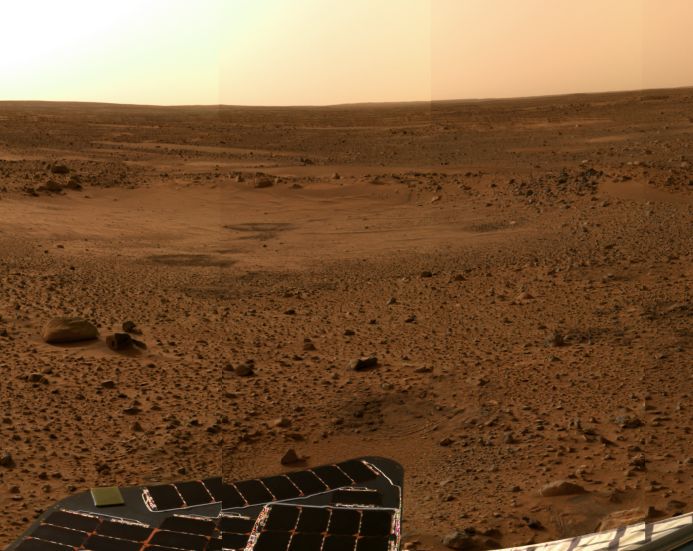| ||||||||||||||||
martes, 22 de septiembre de 2009
| More Testing Before Driving on Mars |
| August 07, 2009 |
 |
Image and Caption
A review on Aug. 6 of test results to date yielded a decision to conduct further checkouts in an augmented testing set-up on Earth before beginning to send driving commands to Spirit for attempting to get out of the loose soil where the rover has partially embedded itself.
The ample power available to Spirit due to wind cleaning dust off of its solar panels has removed the initial urgency for getting the rover moving toward a winter haven site. The rover science team has not completed the analysis the soil layers at Spirit's current location. And the review pointed to additional types of position measurements and analysis that could make further testing useful in mapping the strategy for freeing Spirit.
No specific date has been set for Spirit to resume driving.
Image credit: NASA/JPL-Caltech
Astronomy Picture of the Day
Discover the cosmos! Each day a different image or photograph of our fascinating universe is featured, along with a brief explanation written by a professional astronomer.
Credit: Mars Exploration Rover Mission, JPL, NASA
Explanation: A martian Sol - the average martian solar day - is about 39 minutes longer than Earth's familiar 24 hour day. Operating on martian time, the Spirit rover recently sent back this color postcard image, recorded on Sol 5 of its stay on the martian surface. This cropped version of the full, high-resolution mosaic looks north across Gusev crater floor. The smooth-looking, 9 meter wide circular feature dubbed Sleepy Hollow lies at the center of the scene. Within it are round dark markings which may have been left by the lander swaddled in airbags as it bounced across the martian surface. Other examples of disturbances, likely made by the lander'sretracting airbags, can be seen in the foreground just beyond Spirit's solar cell covered deck.



